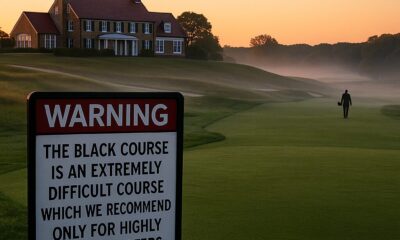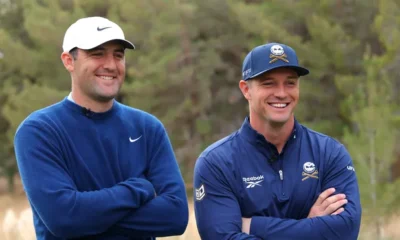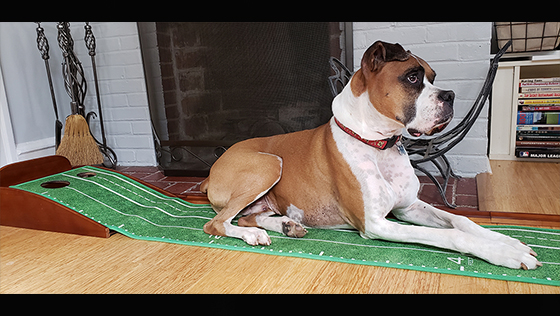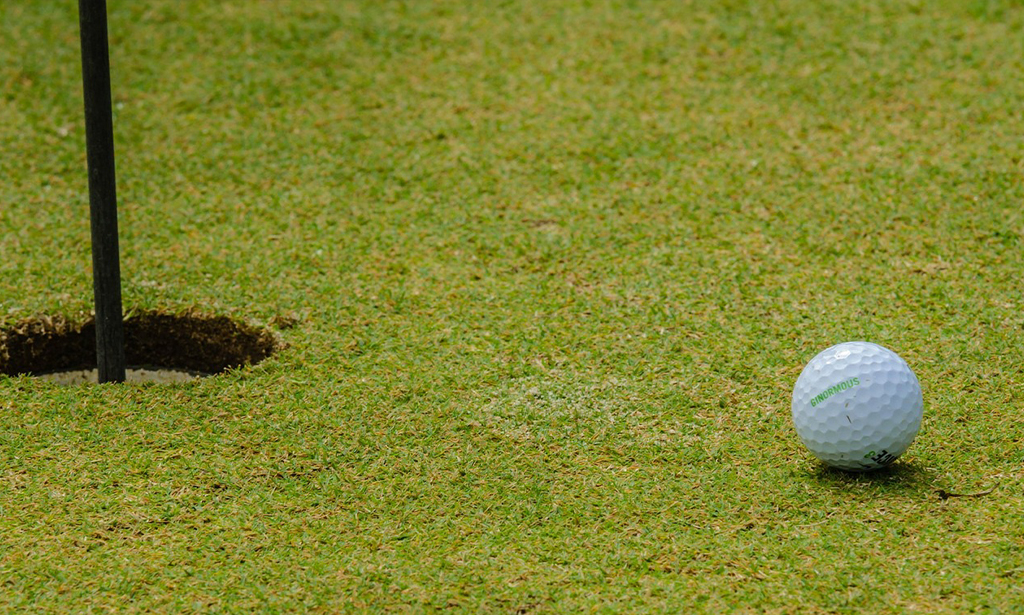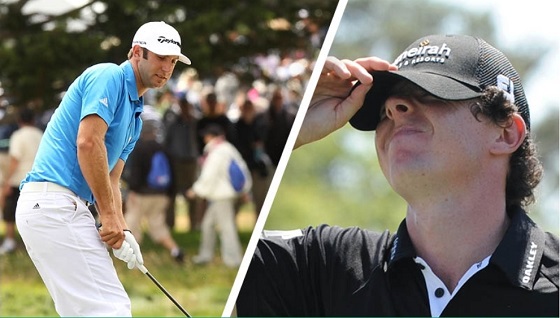Blog
The most viral golf moments of 2021
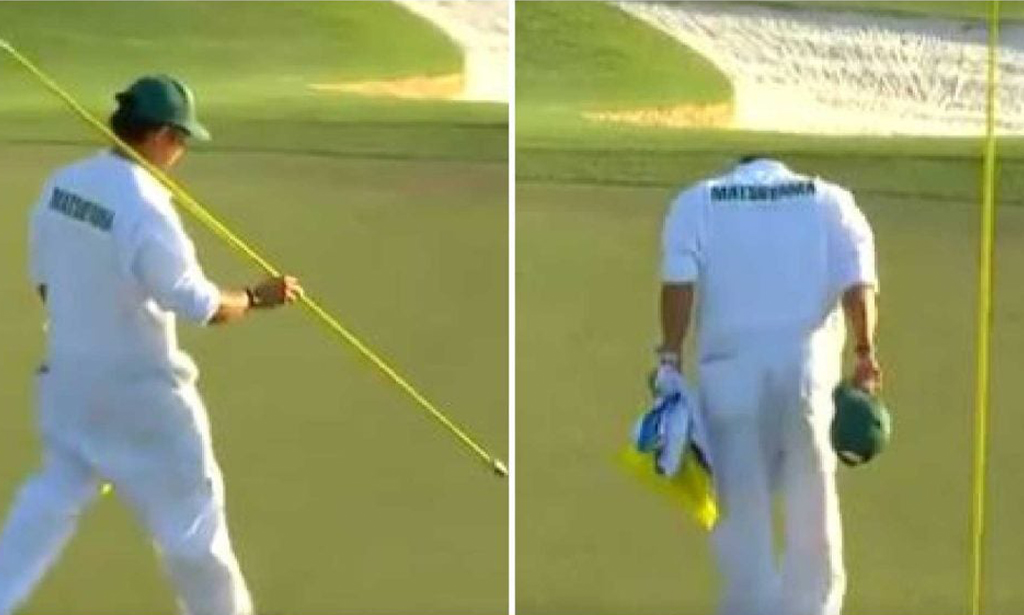
We all know that Tiger moves the needle in the world of golf, but there were plenty of other moments in 2021 that sent us all into a frenzy. I’m here to remind you of the stories you forgot about and the stories that the pros probably wish they could forget about. Without further ado, here’s the funny, the heartwarming, the good and the bad viral moments of 2021.
January
The year in golf started off on an interesting note. Was mercury in retrograde? Are golfers just strange sometimes? Tom Watson somehow came up with a new way to wear headphones, and thus the first Golf Meme of 2021 was born.
February
The golf world stood still on February 23 when Woods was involved in a serious car crash in Los Angeles. There was an outpouring of love and support from across the globe, and many pros chose to wear Sunday red in honor of Woods the following Sunday.
Most people have a tough time pulling off the red-and-black look. Tommy Fleetwood is not most people. This man looks glorious pic.twitter.com/z0phrtvHFa— Dylan Dethier (@dylan_dethier) February 28, 2021
Seemed fitting for tomorrow after the kind of week we’ve had… Black and red on Sunday for TW! pic.twitter.com/TOUcWnUf1p— Justin Thomas (@JustinThomas34) February 28, 2021
Sunday red ❤️@ANNIKA59 | @PGATOUR | @GainbridgeLPGA pic.twitter.com/o2FHDPPUGf— LPGA (@LPGA) February 28, 2021
It’s a @TigerWoods Sunday for the maintenance staff at the @PuertoRicoOpen. @PGATOUR pic.twitter.com/OheyF4o1N8— PGA TOUR Communications (@PGATOURComms) February 28, 2021
?#NEW: Jason Day, Justin Thomas, Min Woo Lee and Sebastian Munoz arrive on Sunday red ?⚫️ pic.twitter.com/ZPa3dMtlLT— TWLEGION (@TWlegion) February 28, 2021
A last-minute shopping trip to buy a red shirt with a logo he never thought he’d wear. All worth it in support of Tiger. pic.twitter.com/KAqDYD0ArW— PGA TOUR Champions (@ChampionsTour) March 1, 2021
It is hard to explain how touching today was when I turned on the tv and saw all the red shirts. To every golfer and every fan, you are truly helping me get through this tough time.— Tiger Woods (@TigerWoods) March 1, 2021
March
Love him or hate him, Bryson DeChambeau’s drives are fun to watch. At Bay Hill, DeChambeau took an outrageous line on the 565-yard, dogleg par-5 at the Arnold Palmer Invitational not once, but twice. It’s safe to say the fans were excited over his two 370-plus-yard drives.
370 yards. ??
The longest drive on the 6th hole since 2003.#QuickHits pic.twitter.com/zkL2jlU8S3— PGA TOUR (@PGATOUR) March 6, 2021
Drive: 377 yards.
Distance to the pin: 88 yards.@B_DeChambeau does it again at No. 6.#QuickHits pic.twitter.com/HYSyDvQCMm— PGA TOUR (@PGATOUR) March 7, 2021
On to the Players Championship. Call it the fifth major or whatever you want, the event is one of the most exciting of the year. That combined with the Twitter star that is Ben An, and you’ve got yourself this funny viral moment.
@ByeongHunAn https://t.co/BqQcee3cwo— Byeong Hun An (@ByeongHunAn) March 11, 2021
Thank you https://t.co/0EWKvRFU8T— Byeong Hun An (@ByeongHunAn) March 12, 2021
Ok, ok. Perhaps it wasn’t funny for An in the moment. Carding an 11 anywhere is no laughing matter … until a few hours later. An handled it perfectly.
April
We’ve always had the Masters to look forward to in April, but now we have the Augusta National Women’s Amateur as well. Before we get into that, we must address the two former World No. 1’s who re-entered the winner’s circle.
After 1,351 days, he’s back in the winner’s circle. ?
Jordan Spieth earns his 12th PGA Tour victory and first win since the 2017 Open Championship at the Valero Texas Open. pic.twitter.com/WBGEcDeZAv— GOLF.com (@GOLF_com) April 4, 2021
On to Masters week. After breaking the color barrier at the Masters in 1975, Lee Elder made history at Augusta once again in 2021 when he joined Jack Nicklaus and Gary Player as an honorary starter.
Will Zalatoris turned heads all week at the Masters, not just because he was contending. People noticed that he resembles one of the caddies from Happy Gilmore, and even Adam Sandler got involved in the bit.
If you’re ever in need of a caddie again let me know. I’ll be better this time. I’m always available for you, Mr. Gilmore. https://t.co/R1e8awZIvh— Will Zalatoris (@WillZalatoris) April 12, 2021
There were a handful of humorous moments at the 2021 Masters, but this moment from Hideki’s caddie was as wholesome as they get.
Hideki Matsuyama’s caddie, Shota Hayafuji, removing his hat and bowing his head after returning the pin.
Quite an image. pic.twitter.com/chUVA9XRTF— Sean Zak (@Sean_Zak) April 11, 2021
Masters week ended with two Japanese winners: Hideki Matsuyama and Tsubasa Kajitani.
The morning after his Masters victory, Mastuyama was photographed looking like any old guy at the airport … with the addition of a green jacket, of course.
The Masters may have ended on the 11th, but there were still a handful of big golf moments later in the month. For instance, the birth of the famous LPGA hoodie.
The Player Impact Program news broke in April, as well. Golf Twitter hasn’t been the same since.
PGA Tour’s new incentive plan is schoolyard math, and it makes perfect sense — cool kids keep their lunch money. https://t.co/Zts9apfnFq via @golfweek— Eamon Lynch (@eamonlynch) April 21, 2021
And finally, Tiger posted his first photo since his accident on April 23.
May
The PGA Championship provided a plethora of viral moments, starting with Phil and the drone. Hey, when you’re on your way to becoming the oldest major champion of all-time, you can request whatever you want.
“Can you please move that drone from my flight?
“Not only is it annoying, but it’s gonna hit it.”
SICK pic.twitter.com/XYT13yjH31— Sean Zak (@Sean_Zak) May 22, 2021
It wouldn’t be a proper golf tournament without some sort of Brooks and Bryson interaction, which is exactly what we got at Kiawah. That came in the form of a leaked video. It’s been taken down from most platforms, but I was able to find one living copy of it here.
I could’ve dedicated this entire article to viral Brooks and Bryson moments from 2021, but you can learn all about that here. And for our last PGA Championship viral moment, Phil took to Twitter to celebrate his win.
June
June got off to an unfortunate start when Jon Rahm tested positive for COVID-19 with a six-shot lead at the Memorial.
Jon Rahm was forced to withdraw from the Memorial seconds after completing his third round due to a positive Covid-19 test. https://t.co/7sQN6CLWbT— GOLF.com (@GOLF_com) June 5, 2021
Then things took an interesting turn when the Premier Golf League published this open letter to the world of golf. I’m still not entirely sure what to make of it.
An open letter to the world of golf from the PGL team
Find out more ? https://t.co/rXO4jz389C pic.twitter.com/NuJYKf4ZrJ— Premier Golf League (@premgolfleague) June 8, 2021
On to the U.S. Open. First, Viktor Hovland withdrew due to sand in his eye and then wrote a hilarious Instagram caption to explain the situation.
And then outgoing USGA executive Mike Davis caddied for marker Jason Gore in Round 3.
We can’t forget the two insanely clutch putts that earned Rahm his first major title.
Last but not least, Phil Mickelson spent some time with Kelley Cahill Rahm and Kepa Rahm while Jon hit balls in case of a potential playoff.
Phil bringing over a chair for Kelly and the baby to sit and watch Rahm hit balls is the sweetest ? @PhilMickelson @usopengolf pic.twitter.com/aE4x09AVl3— Kira K. Dixon (@KiraDixon) June 21, 2021
“I didn’t sign up for a Phireside chat” pic.twitter.com/bVtqvQRdBt— claire rogers (@kclairerogers) June 21, 2021
Nelly Korda capped off the month of June by winning her first major at the KPMG Women’s PGA Championship and becoming the World No. 1.
MAJOR CHAMPION.
Nelly Korda makes history in Atlanta at the KPMG Women’s PGA Championship ? pic.twitter.com/AWncpUzsGG— LPGA (@LPGA) June 27, 2021
July
Ah, Open Championship month and the start of the Olympics. July delivered a handful of viral moments. Let’s start with Paul Larsen, head greenskeeper at Royal St. George’s.
This is Royal St. George’s head greenskeeper ? pic.twitter.com/kIMiuH6EMV— LKD (@LukeKerrDineen) July 14, 2021
Check out that hair. Next up, we have some golf action in Tokyo.
Went into the Olympic village for a nice workout last night. Safe to say there weren’t many athletes fighting me for the 20 lb dumbbells ?— Justin Thomas (@JustinThomas34) July 26, 2021
Relatable. And although Patrick Reed got a late start, he arrived to the games in style.
August
It’s safe to say it was REALLY hot at the women’s Olympic golf tournament. So hot, in fact, that some players wore cooling vests to combat the extreme temperatures.
Some golf moments seem like they happened just yesterday. Rory throwing his 3-wood at Liberty National is one of those moments.
Why did Rory McIlroy spend so much time hitting 3-woods on the range yesterday?
“I threw my 3-wood onto the New Jersey Turnpike off the 9th hole on Monday, so I was without a 3-wood coming here,” he said.
“If someone wants to go get a 3-wood, there’s one in there somewhere.”— Dylan Dethier (@dylan_dethier) August 25, 2021
September
The month of team golf. Let’s kick things off with a look back at the Solheim Cup. It’s safe to say it was a fun time, and the European Team went back-to-back.
Macarena dance time with @carlotagolf on the first tee ? pic.twitter.com/Wep5o22j0j— The Solheim Cup (@TheSolheimCup) September 6, 2021
.@SolheimCupEuro wins back-to-back Solheim Cup! ? pic.twitter.com/264saO1vEl— The Solheim Cup (@TheSolheimCup) September 6, 2021
Up next: iron covers. I know most of the golf world shuns them, but we found one exception in September. Pro Aaron Rai uses them, and for good reason.
And now over to the Ryder Cup. There were a lot of viral moments that occurred at Whistling Straits, so for time’s sake, I’ll present each without comment.
No. 23 at the 43rd Ryder Cup. ? pic.twitter.com/EHnPrfBEa4— GOLF.com (@GOLF_com) September 24, 2021
Teammates hug. pic.twitter.com/KfIUrJRzEg— GOLF.com (@GOLF_com) September 26, 2021
Bryson got a lot of attention in September, as he competed in the World Long Drive after the Ryder Cup.
403 yards.
Bryson WINS heat 3. He’s going nuts on the tee box pic.twitter.com/AL6aevkDQP— James Colgan (@jamescolgan26) September 28, 2021
October
On October 16, K.H. Lee, a golfer who I previously knew very little about, became my hero.
Next up is Brian Morris, the head pro at Ocean View Golf Course in Bermuda, who is battling inoperable brain cancer and teed it up in the Bermuda Championship.
For nearly two years, Brian Morris has undergone chemotherapy every three weeks.
He has terminal cancer.@Bermuda_Champ granted the 53-year-old Bermudian pro a sponsor’s exemption.
He’ll live out his lifelong dream this week. pic.twitter.com/VyDUxWTMkb— PGA TOUR (@PGATOUR) October 25, 2021
“My outlet is golf and I think that I’m better for it.”
Brian Morris’ dream of playing on the PGA TOUR becomes a reality today @Bermuda_Champ.
The local pro has been battling stage IV cancer for nearly two years. pic.twitter.com/nPHphxhtrP— PGA TOUR (@PGATOUR) October 28, 2021
And finally, Buffalo Bills quarterback Josh Allen dressed up as Phil Mickelson for Halloween.
November
First up is Rory’s ripped shirt at the European Tour finale.
Frustrations boiled over for Rory after a final-round 74.
(Via @tourmiss) pic.twitter.com/adHruD8T7u— GOLF.com (@GOLF_com) November 21, 2021
And just when we thought that would be the biggest golf moment of the day, Tiger posted this.
Making progress pic.twitter.com/sVQkxEHJmq— Tiger Woods (@TigerWoods) November 21, 2021
A week and a half later, Tiger had his first press conference in nine months in November at the Hero World Challenge.
December
The Hero World Challenge was still underway when the calendar turned to December, and all of Golf Twitter lost their minds when Tiger was seen hitting balls in Sunday red.
Missed that Sunday Red.pic.twitter.com/DD0AOIJ6y1— GOLF.com (@GOLF_com) December 5, 2021
Three days later, Tiger committed to the PNC Championship, and the golf world once again exploded.
Although it’s been a long and challenging year, I am very excited to close it out by competing in the @PNCchampionship with my son Charlie. I’m playing as a Dad and couldn’t be more excited and proud.— Tiger Woods (@TigerWoods) December 8, 2021
Nelly Korda won a major and an Olympic gold this year. She might be the best female golfer in the world! So watching her geek out over meeting Tiger Woods was the best thing I saw today pic.twitter.com/c2HPOMhs3C— Dylan Dethier (@dylan_dethier) December 19, 2021
Nelly Korda won a major and an Olympic gold this year. She might be the best female golfer in the world! So watching her geek out over meeting Tiger Woods was the best thing I saw today pic.twitter.com/c2HPOMhs3C— Dylan Dethier (@dylan_dethier) December 19, 2021
❤️pic.twitter.com/UsfLTtULnG— GOLF.com (@GOLF_com) December 19, 2021
And finally, I’ll leave you with this PGA Tour-DP World Tour collab that is so, so good. Happy New Year, everyone. Here’s to more golf virality in 2022.
It’s year-end review time… pic.twitter.com/6GhXaI6127— GOLF.com (@GOLF_com) December 27, 2021
This article originally appeared on Golf.com.

Golf, often perceived as a male-dominated sport, has seen numerous women defy norms, break barriers, and challenge the status quo. These pioneering women have not only made significant strides in the game but have also played a crucial role in reshaping the sport’s landscape. This article delves into the impressive careers of some of these groundbreaking women in golf, highlighting their incredible achievements and the enduring impact they’ve had on the sport.

Babe Didrikson Zaharias: The Woman Who Redefined Golf
Named “Woman Athlete of the Half Century” by the Associated Press in 1950, Babe Didrikson Zaharias is undoubtedly one of the most remarkable athletes in history. Her golfing career was nothing short of extraordinary.
Triumph Against the Odds
Despite facing resistance from the golfing establishment for her flamboyant personality and style of play, Zaharias refused to be sidelined. She won a staggering 10 LPGA major championships and 41 LPGA tour events, setting stage records and leaving an indelible mark on the sport.
Paving the Way for Others
Zaharias also co-founded the Ladies Professional Golf Association (LPGA), creating more opportunities for women in professional golf. Her tenacity and resilience inspired countless women to pursue their golfing aspirations, forever changing the face of the sport.

Nancy Lopez: A Beacon of Inspiration
Nancy Lopez is another trailblazing woman in golf. A child prodigy, Lopez first made waves in the golfing world when she won the New Mexico Women’s Amateur at just 12 years old.
.jpg)
A Stellar Career
Lopez turned professional at the age of 21 and quickly established herself as a dominant force in women’s golf. She won 48 LPGA Tour events, including three major championships, and was inducted into the World Golf Hall of Fame in 1987.
Inspiring Future Generations
Lopez’s impact extends far beyond her impressive record. She is widely respected for her sportsmanship, dedication, and spirit, and her success has inspired many young girls to take up golf.
Annika Sorenstam: Shattering Glass Ceilings
Annika Sorenstam is widely considered one of the greatest female golfers of all time. The Swedish star boasts an astounding 72 LPGA Tour victories, including 10 majors.
Making History
In 2003, Sorenstam made history by becoming the first woman in 58 years to compete in a PGA Tour event. This monumental moment not only put the spotlight on women’s golf but also challenged the gender divide in the sport.
Championing Women’s Golf
Post-retirement, Sorenstam has remained a powerful advocate for women’s golf. Through the Annika Foundation, she works to provide opportunities for young female golfers and promote the sport at the grassroots level.
Conclusion: The Legacy of These Trailblazing Women
The contributions of Zaharias, Lopez, and Sorenstam to golf are immeasurable. They’ve not only shattered records and broken barriers but also opened doors for countless women in the sport. Their legacies serve as a testament to the power of determination, talent, and hard work. They have reshaped the world of golf, proving that the fairway is no longer just a man’s domain.
These women have paved the way for the next generation of female golfers, who continue to push boundaries and redefine the sport. As we celebrate these pioneering women, we look forward to seeing more women rise, conquer, and leave their own mark on the fairways.
Today, women in golf continue to make strides, thanks in part to the trail blazed by these pioneering women. Let their stories inspire you to break barriers in your own field, whatever that may be. Because when it comes to achieving greatness, the most important shot in golf, as in life, is the next one.
Blog
Sustainability in Golf: The Future of Eco-Friendly Greens
Read about the environmental impact of golf courses.

Golf, a sport often associated with pristine, manicured greens and lush landscapes, isn’t historically perceived as eco-friendly. However, with growing concerns about climate change and sustainability, the golf industry is steadily transitioning towards more sustainable practices. This article will explore how golf courses around the world are becoming greener and more eco-friendly while maintaining their appeal to golf enthusiasts.
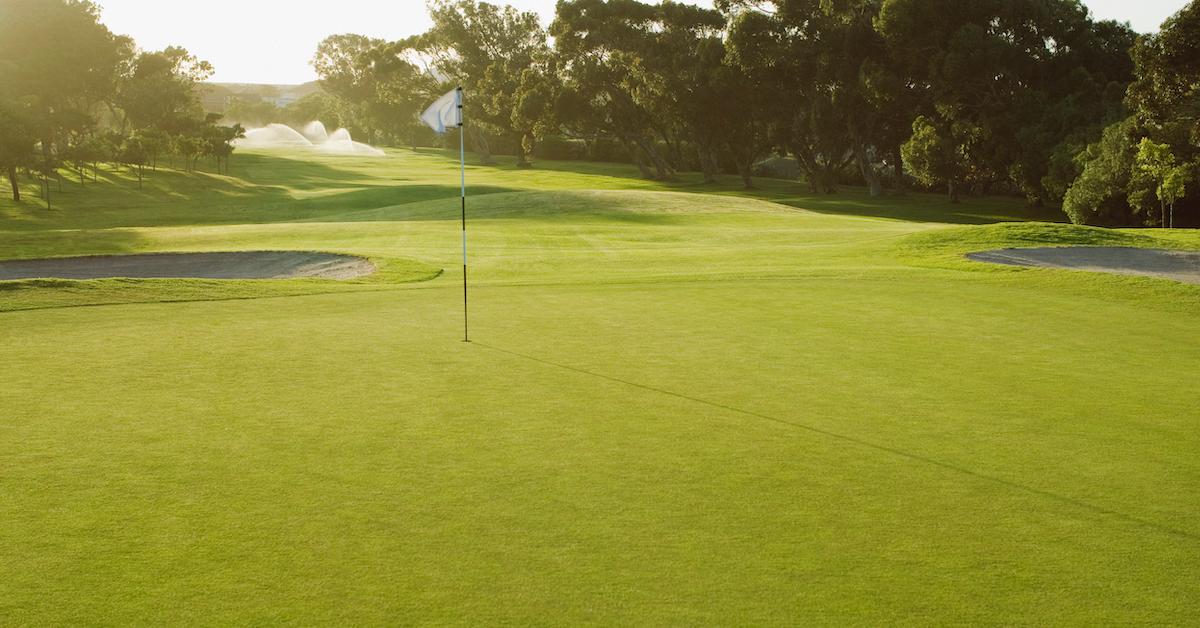
The Environmental Impact of Golf Courses
Golf courses traditionally use extensive resources, including water, pesticides, and fertilizers, which can have detrimental effects on the environment.
-
-
- Water Usage: Maintaining the verdant landscapes of a golf course requires enormous amounts of water. This is particularly concerning in regions where water scarcity is a significant issue.
- Pesticides and Fertilizers: To keep golf courses lush and free of pests, large amounts of chemicals are often used. These substances can seep into the ground, polluting water sources and harming local wildlife.
- Habitat Disruption: Golf courses often displace natural habitats, upsetting local ecosystems and reducing biodiversity.
-

Green Initiatives in Golf: Sustainability on the Fairways
Recognizing the environmental impact, many golf courses are now implementing sustainable practices to reduce their ecological footprint.

Water Conservation
Water conservation is a significant focus in eco-friendly golf course design. Methods employed include:
-
-
- Recycled Water: Many golf courses are now using recycled water or rainwater for irrigation, significantly reducing the use of freshwater resources.
- Drought-resistant Grass: Some courses are opting for drought-resistant varieties of grass that require less watering.
- Irrigation Technology: Advanced irrigation systems can efficiently distribute water, minimizing waste.
-

Reducing Chemical Usage
Reducing the use of harmful chemicals is another crucial step towards sustainability in golf. This can be achieved through:
-
-
- Organic Fertilizers and Pesticides: Many golf courses are switching to organic alternatives, which are less harmful to the environment.
- Integrated Pest Management: This approach focuses on long-term prevention of pests through biological control and habitat manipulation, reducing the need for chemical pesticides.
-

Preserving Local Habitats
Golf courses are increasingly being designed to coexist harmoniously with local ecosystems. This involves:
-
-
- Preserving Natural Features: Instead of altering the landscape to fit the course, designers are now incorporating existing natural features into the design.
- Creating Wildlife Habitats: Some golf courses are creating habitats for local wildlife, promoting biodiversity.
-
Case Studies: Sustainable Golf Courses Around the World
There are several golf courses worldwide that serve as excellent examples of sustainability in the industry.
- Pebble Beach Golf Links, USA: This renowned golf course uses recycled water for irrigation, reducing its freshwater use by 50%.
- St Andrews Links, Scotland: Known as the “Home of Golf”, St Andrews Links has implemented an extensive environmental management plan, including water conservation, habitat protection, and the use of organic fertilizers.
- Vineyard Golf Club, USA: This golf course in Massachusetts is one of the first to become fully organic, using only organic fertilizers and pesticides.
The Future of Sustainable Golf
The golf industry’s move towards sustainability is not just about eco-friendly practices on the course. It’s also about educating players and visitors about the importance of sustainability, thus promoting a culture of environmental consciousness.
While the transition to greener practices may be challenging, the benefits are immeasurable. Sustainable golf courses not only help protect the environment, but they can also enhance the playing experience, offering golfers the chance to play their favorite sport while surrounded by thriving, natural landscapes.
In conclusion, as awareness of environmental issues continues to grow, the question of “how green can the greens get?” is being answered by golf courses worldwide. Through innovative practices and a commitment to sustainability, the future of golf looks set to be greener than ever. As players, supporters, and enthusiasts of the sport, we can all contribute to this positive change by supporting golf courses that prioritize sustainability and by advocating for green practices within the golfing community.
Blog
The Golfer’s Holiday Hint-Dropping Guide
Your spouse thinks you want socks. You want a new driver. Here’s how to fix that.

Because subtlety is overrated when there’s a new driver on the line
Your spouse thinks you want socks.
Your kids think you want a tie.
Your mother-in-law is convinced you’d love another sweater with a reindeer on it, even though you’ve worn the last three exactly never, and everyone knows it, but somehow this year will be different.
It won’t be.
Here’s the problem. You want golf stuff. They don’t know what golf stuff means. You say “rangefinder” and they hear “robot finder.” You mention “premium golf balls” and they think all golf balls are the same, which is adorable but wrong, and you can’t exactly explain that without sounding like a crazy person who cares too much about dimple patterns.
So you need a strategy.
Not a subtle one either. Forget dropping hints like breadcrumbs. Drop them like anvils. We’re talking about a systematic campaign of suggestion, repetition, and strategic device-leaving that would make Madison Avenue jealous.
The Laptop Strategy (For the Tech-Savvy Golfer)
Leave your laptop open. Always. But not to just anything.
Open to golf retailer websites with items in your cart. Specific items. With the size, color, and model number clearly visible. And here’s the key – leave it open on the kitchen counter where your spouse makes coffee, because everyone looks at screens while waiting for coffee, it’s basically a law of physics at this point.
Do this for three weeks straight. Different items, same cart. They’ll get the message. And if they don’t, you’ve got a backup plan because you can just buy it yourself on December 26th when everything goes on sale.
The Casual Mention Method
This requires finesse.
Not too much though.
The goal is to work golf gifts into every conversation without seeming obsessed, which you are, but they don’t need to know that. Your daughter mentions her science project? “Speaking of projects, I’ve been thinking about upgrading my wedges.” Your son talks about his basketball shoes? “Funny you mention shoes – golf shoes with better traction would really help my game.” The mailman asks how you’re doing? “Great, though I’d be better with a new putter.”
Is this overkill? Maybe. Will it work? Absolutely.
The Magazine Massacre
Buy every golf magazine on the newsstand. Dog-ear the pages. Circle items in red pen. Write notes like “This would be perfect!” and “Honey, look at this one!” and leave them everywhere – the bathroom, the nightstand, the kitchen table, the car, their car, basically anywhere someone might sit for more than thirty seconds.
When they ask why there are seven golf magazines in the living room, just smile and say you’re “doing research.” Research for what? They won’t ask. They’re too busy looking at all those circled items with price tags helpfully highlighted.
The Strategic Screenshot
Text them screenshots. Daily.
“Look at this cool driver!” Send.
“These gloves are on sale!” Send.
“Remember when I mentioned wanting new golf shoes? These are the ones.” Send with three heart emojis because you’re not a monster, you still care about the relationship, you just also care about having the right equipment to shave three strokes off your game.
It’s called balance.
The Gift List That’s Not a Gift List
Create a shared note on your phone called “Gift Ideas” and fill it exclusively with golf items. When they ask what you want for Christmas, just say “Oh, I don’t know, I’m easy to shop for!” and then casually mention you made a little list of ideas, you know, just in case they needed inspiration, no pressure, but it’s organized by price range and includes links.
This works because you’re giving them exactly what they want – a clear shopping list – while maintaining the illusion that you’re being flexible. You’re not. But they don’t need to know that until after the presents are wrapped.
The Buddy System
Recruit your golf buddies. Have them “accidentally” call when your spouse is around. Make sure they loudly discuss the new equipment they just bought and how much it’s improved their game. Your spouse will hear. They’ll connect the dots. And if they don’t, have your buddy call again tomorrow. And the next day. Eventually, either your spouse will buy you golf stuff or they’ll buy you a different phone number, and honestly, both outcomes have their merits.
The Amazon Wish List Blitz
Create an Amazon wish list. Share it with everyone. Your spouse, your kids, your parents, your siblings, your coworkers, that guy you met at the driving range once, everyone.
Put forty items on it. Thirty-eight should be golf-related. The other two? A book and a candle, just so you seem reasonable and well-rounded, which you’re not, but again, they don’t need to know that.
Update it weekly. Add reviews in the comments like “Would really help my slice” or “These are the exact ones my pro recommended.” Make it impossible for them to buy anything else because everything else looks boring compared to golf equipment that promises to transform your game, which it might not, but the promise is what matters here.
The Direct Approach (For the Brave)
Just tell them.
Seriously.
Sit them down. Look them in the eyes. Say “I want golf stuff for Christmas. Specifically, I want this driver, these balls, and this rangefinder. Here are the links. Here are the specs. I’ve made it as easy as possible. Thank you for listening to my TED talk about my golf needs.”
Will they appreciate the honesty? Probably. Will you get what you want? More likely than if you kept hoping they’d telepathically understand that you need a new sand wedge because the grooves on your current one are worn down and it’s affecting your bunker play, which is already bad enough without equipment issues.
The Follow-Up Campaign
Don’t stop after dropping hints. Follow up. “Did you see that text I sent about the driver?” Ask during dinner. “Remember those golf shoes I mentioned?” Ask during breakfast. “Still thinking about that rangefinder.” Say it to no one in particular while watching TV.
Repetition is your friend. Marketing people know this. Politicians know this. Now you know this. Say it enough times and it stops being a hint and starts being a fact – you want golf stuff, they know you want golf stuff, and somewhere in the back of their mind, they’re starting to accept that golf stuff is happening this year.
The Backup Plan
Here’s the truth – they might still get it wrong. They might buy you golf-themed pajamas when you wanted golf balls. They might get you a gift card to a mini-golf place when you wanted a membership to a real course. They might wrap up golf socks, which are fine, but they’re not the GPS watch you’ve been talking about since July.
It’s okay. Say thank you. Mean it. Then on December 26th, hit those post-Christmas sales like a bargain hunter who knows exactly what they want and has been planning this shopping trip since Thanksgiving.
Because you have been.
And that’s fine. Golf equipment is expensive. If waiting one more day means you can get 40% off that driver you’ve been eyeing, that’s called being financially responsible. Your spouse will appreciate it. Eventually. After you explain why you needed three new wedges when you already have wedges.
“The grooves,” you’ll say.
They won’t understand.
But you’ll have new wedges.
The Real Gift
Look, here’s what matters. The holidays aren’t really about getting the perfect golf equipment, even though that would be nice, and you’ve spent considerable mental energy making sure everyone knows exactly what you want.
The holidays are about spending time with people you love. Even if they buy you reindeer sweaters. Even if they think all golf balls are the same. Even if they wrap up golf socks when you desperately need new grips for your irons.
They’re trying. That counts for something.
But also, leave your laptop open to that golf retailer website. Just in case. Because trying is good, but specific product links are better, and you didn’t make it this far in the season without having a solid Plan B.
Happy holidays. May your drives be long, your putts be true, and your gift-givers be observant enough to notice the forty-seven hints you’ve dropped since October.
And if all else fails?
There’s always next year.
-

 Product Review6 years ago
Product Review6 years agoThe Perfect Practice Putting Mat Review by Jason Tenzer
-

 Blog4 years ago
Blog4 years agoLoophole Rule Offers PGA Tour Pros a Mulligan
-

 Blog4 years ago
Blog4 years ago2021 Buyer’s Guide: The Top 10 Value Golf Balls For Distance & Feel
-

 Blog5 years ago
Blog5 years agoGolf Marriage Counselor
-

 Blog6 years ago
Blog6 years ago9 Biggest Chokes Of The Past Decade
-

 Product Review6 years ago
Product Review6 years agoTHE ADJUSTABLE IRONS: WALKING STICKS GOLF CLUBS
-

 Blog4 years ago
Blog4 years agoWhat Your Golf Clubs Say About You
-

 Equipment6 years ago
Equipment6 years agoOHK Sports Interview by Jason Tenzer








